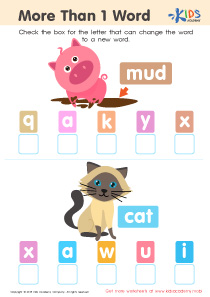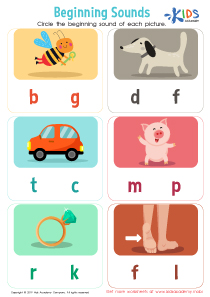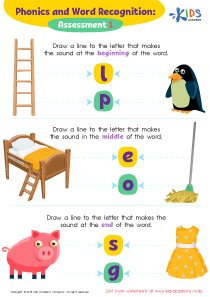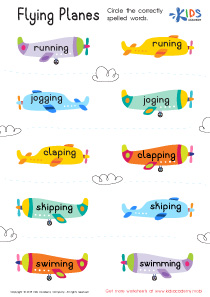Elementary Phonics Worksheets for Ages 4-6 - Page 2
29 filtered results
-
From - To
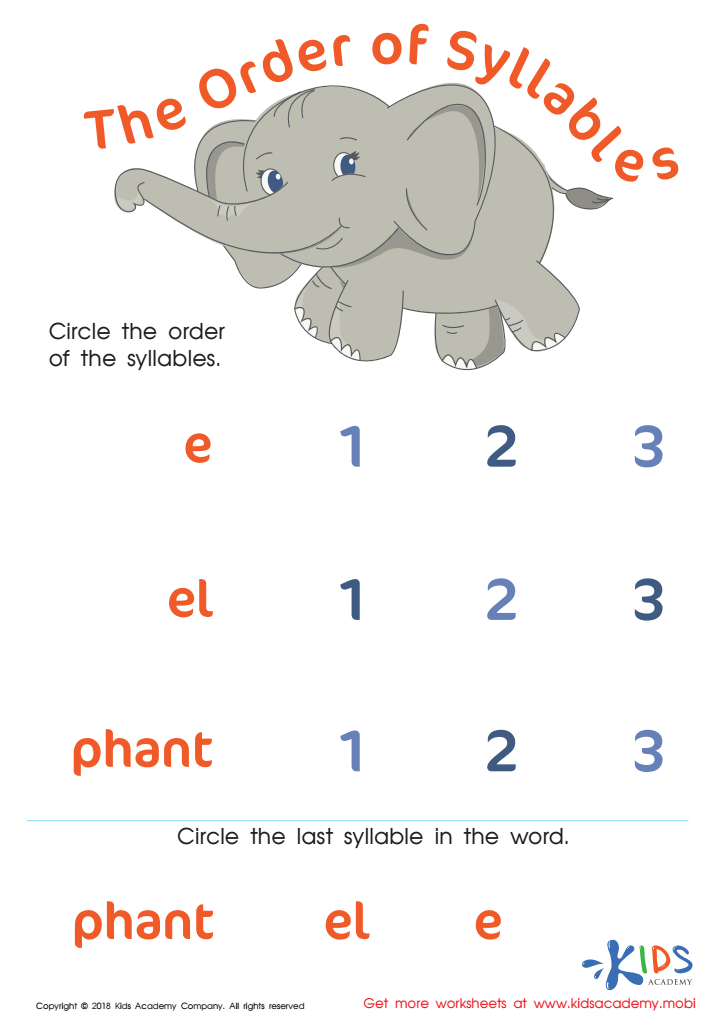

The Order of Syllables Worksheet
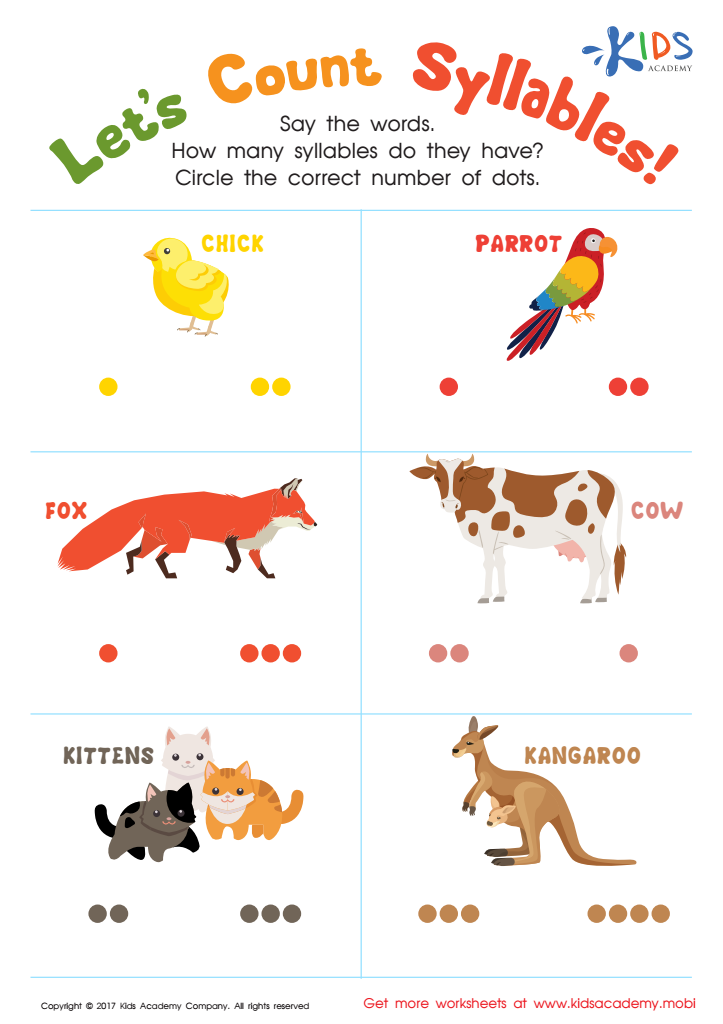

Lets Count Syllables Worksheet
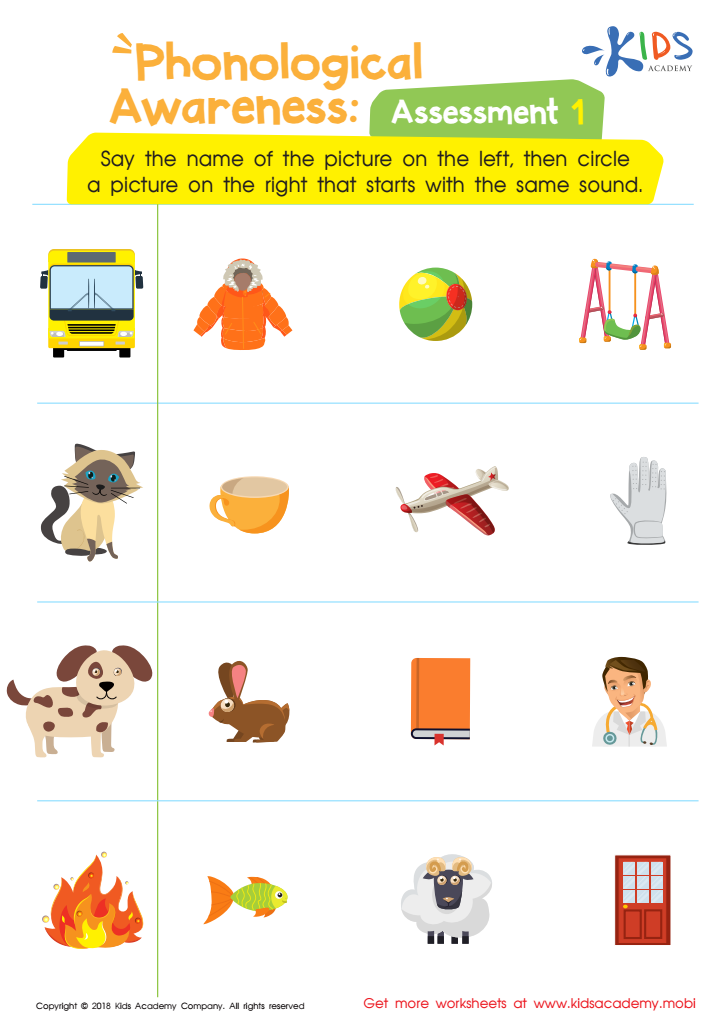

Phonological Awareness: Assessment 1 Worksheet
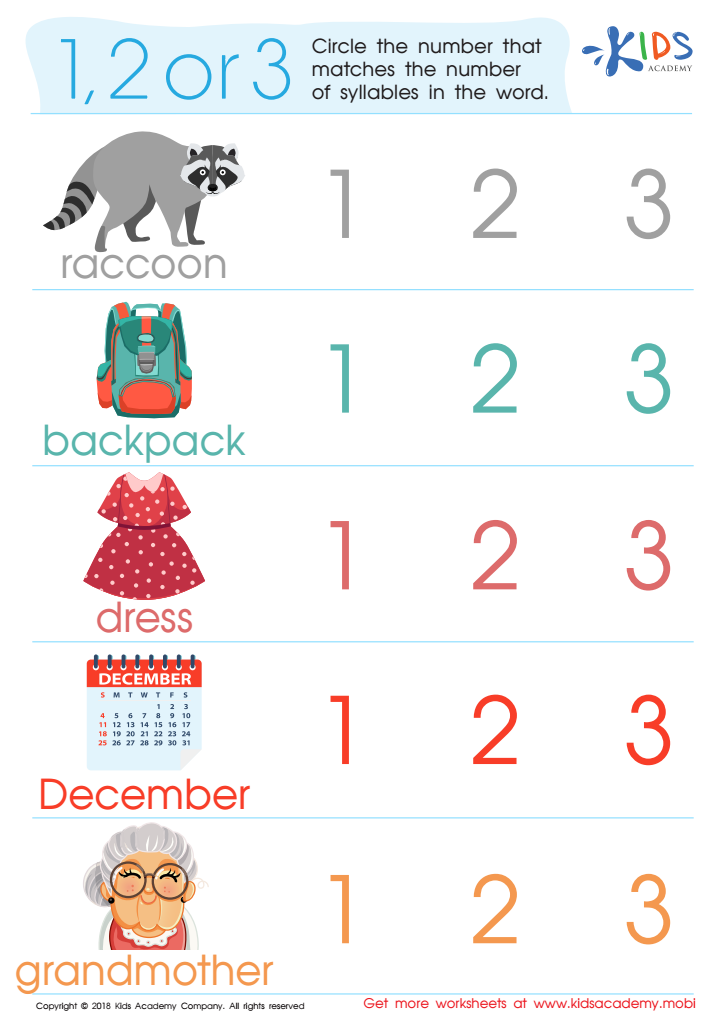

1, 2 or 3? Worksheet
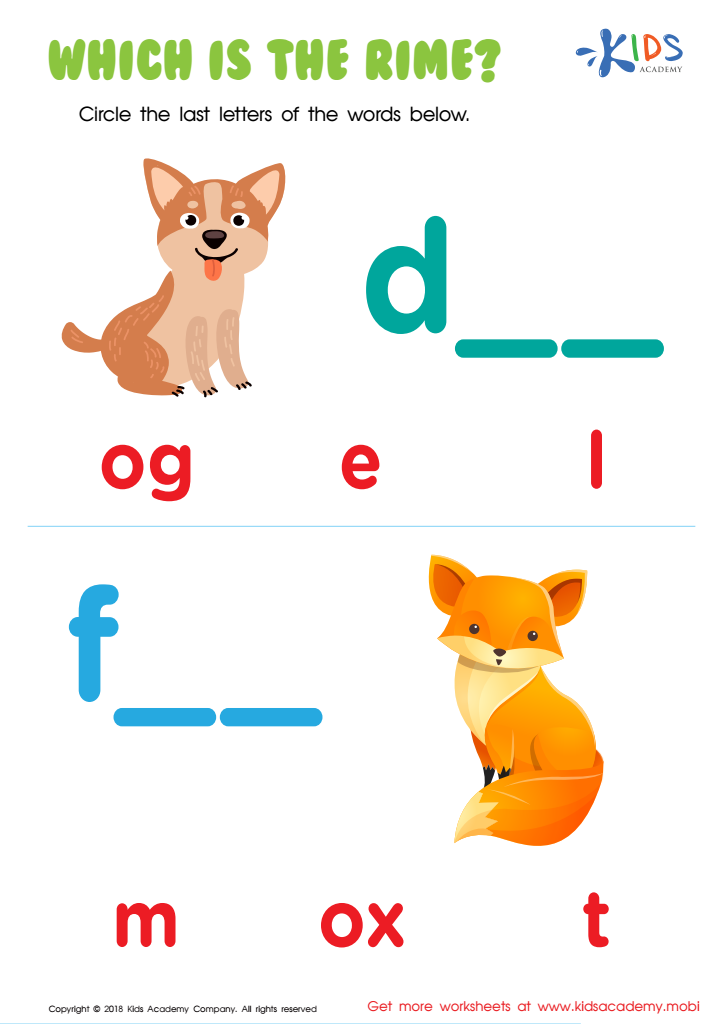

Which Is the Rime? Worksheet
Elementary Phonics for Ages 4-6 is an essential stepping stone in a child's educational journey, laying the foundation for literacy and a lifelong love of reading. These early years are pivotal for language development, and worksheets specifically designed for this age group can significantly enhance learning outcomes. Here’s why:
Firstly, worksheets on Elementary Phonics for Ages 4-6 are meticulously crafted to align with the cognitive and motor skills of young learners. They introduce phonics in a fun, engaging way, making the connection between sounds and letters more accessible and memorable. This methodical approach helps children decode words more effectively, setting them up for reading success.
Moreover, these worksheets offer a variety of exercises that cater to different learning styles. Whether it’s tracing letters, matching sounds to pictures, or identifying letter sounds in simple words, each activity is geared towards reinforcing phonetic principles in a stimulating environment. This not only keeps children engaged but also ensures that the learning process is inclusive and adaptable to individual needs.
Additionally, Elementary Phonics worksheets for Ages 4-6 empower parents and educators to track progress and identify areas where extra support might be needed. This ongoing assessment is vital for addressing learning gaps early and tailoring instruction to maximize each child’s potential.
In conclusion, Elementary Phonics worksheets for Ages 4-6 are a valuable resource in the educational toolkit, fostering essential reading skills through interactive and enjoyable learning experiences. They not only support literacy development but also inspire confidence and a positive attitude towards learning in young minds.
 Assign to My Students
Assign to My Students




